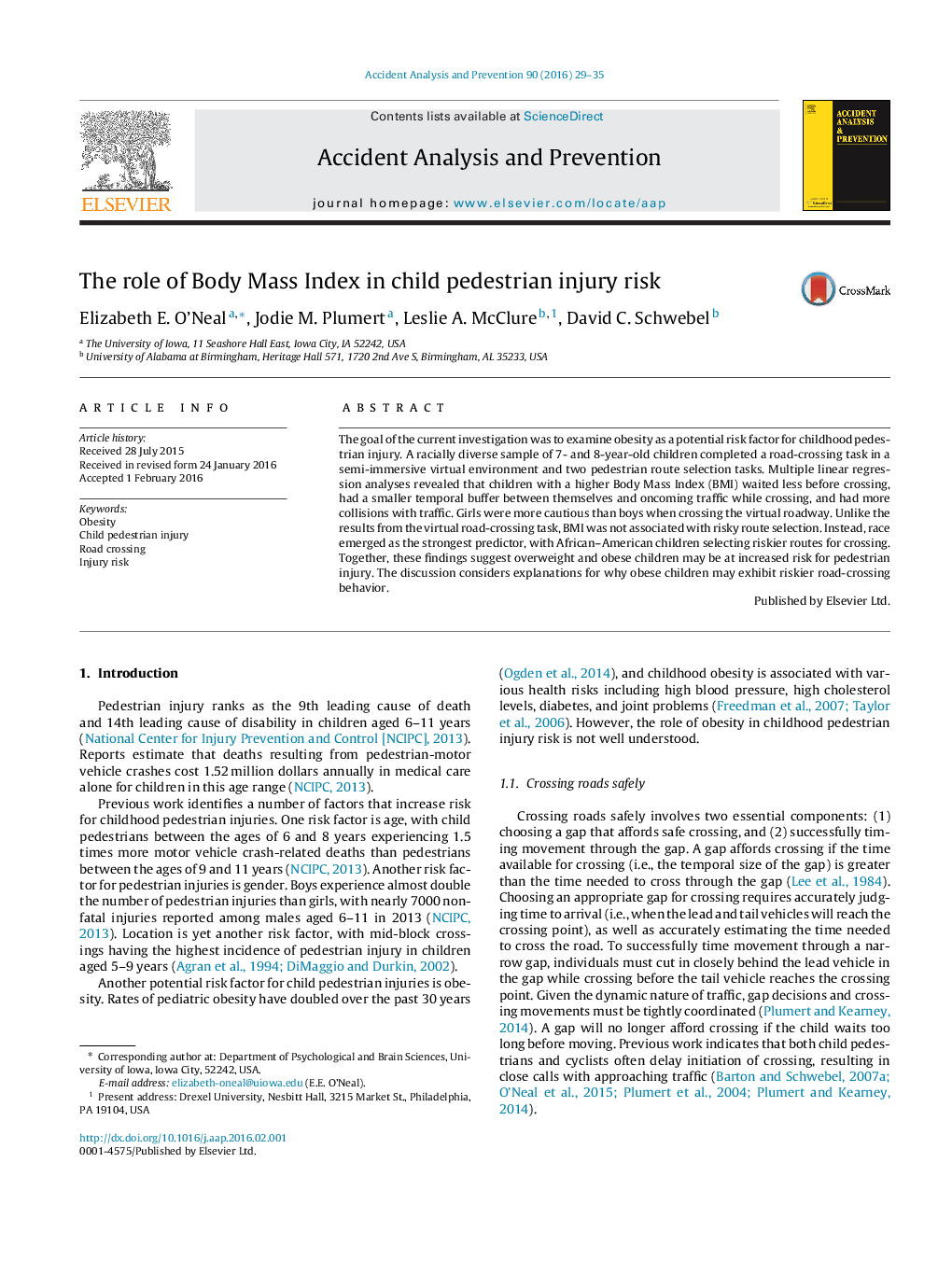| Article ID | Journal | Published Year | Pages | File Type |
|---|---|---|---|---|
| 572061 | Accident Analysis & Prevention | 2016 | 7 Pages |
Abstract
The goal of the current investigation was to examine obesity as a potential risk factor for childhood pedestrian injury. A racially diverse sample of 7- and 8-year-old children completed a road-crossing task in a semi-immersive virtual environment and two pedestrian route selection tasks. Multiple linear regression analyses revealed that children with a higher Body Mass Index (BMI) waited less before crossing, had a smaller temporal buffer between themselves and oncoming traffic while crossing, and had more collisions with traffic. Girls were more cautious than boys when crossing the virtual roadway. Unlike the results from the virtual road-crossing task, BMI was not associated with risky route selection. Instead, race emerged as the strongest predictor, with African-American children selecting riskier routes for crossing. Together, these findings suggest overweight and obese children may be at increased risk for pedestrian injury. The discussion considers explanations for why obese children may exhibit riskier road-crossing behavior.
Keywords
Related Topics
Physical Sciences and Engineering
Chemical Engineering
Chemical Health and Safety
Authors
Elizabeth E. O'Neal, Jodie M. Plumert, Leslie A. McClure, David C. Schwebel,
